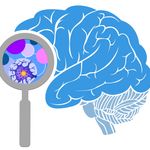Animal Research
Animal Research is the use of animals in scientific procedures that helps scientists understand diseases that afflict animals and humans.
-
JUN 17, 2020 | 12:00 PMThe 2020 pandemic caused by the severe acute respiratory syndrome coronavirus 2 (SARS-CoV-2) continues to rage. While PCR-based assays are used for viral diagnosis, high through-put, rapid s...Speaker: Susan Zolla-Pazner, PhDJUN 17, 2020 | 10:30 AMChoosing the right solution for your laboratory’s SARS-CoV-2 testing needs can be a difficult decision. With the dynamic demand on labs, making the wrong choice could be catastrophic....JUN 17, 2020 | 10:30 AMThe COVID-19 pandemic is caused by a newly discovered coronavirus, SARS-CoV-2. To characterize and detect this new virus, antibodies to support scientific research, diagnosis and vaccine dev...JUN 17, 2020 | 10:30 AMCOVID 19 has resulted in diverse research needs ranging from mechanism and impact of the disease, to solutions to identify, combat or treat the disease. Cellular technologies such as flow an...Speaker: Haley R. Pugsley, PhD , Kamala Tyagarajan, PhDJUN 17, 2020 | 9:00 AMEmerging infectious diseases” are those that are rapidly increasing in incidence or geographic range. Most are zoonotic, entering the human population from other animal species. None e...JUN 17, 2020 | 7:30 AMThe spread of the SARS-COV-2 (COVID-19) pandemic is driving an urgent need for extensive testing, including patients and health workers as a priority. The most sensitive and reliable method...Speaker: Gabriel Fernandez de Pierola , Christopher Norey, PhDJUN 17, 2020 | 6:00 AMSince the outbreak of the Covid-19 pandemic, the development of diagnostics for both the virus (molecular) and the host immune response (serological) has become essential for monitoring the...Speaker: Steve Angeloni , Nicole Pecora, MD, PhDJUN 17, 2020 | 6:00 AMWith more than 6 million infections and more than 300,000 deaths (as of end of May 2020), the current COVID-19 pandemic has led to large scale lockdown around the world to prevent further sp...JUN 17, 2020 | 6:00 AMNext-generation sequencing (NGS) is the primary technology used to identify genomic targets for vaccine development, detect emerging viral strains and monitor transmission patterns. Enhanced...JUN 17, 2020 | 12:00 AMWith over 6.7 million cases and over 213 countries and territories affected worldwide, the novel coronavirus (COVID-19) has challenged the world in several ways. As the global pandemic sprea...JUN 17, 2020 | 12:00 AMStaying informed on diagnostic tools for SARS-CoV-2 can be challenging. Because the results of the various test have different clinical implications it is important to understand the design...JUN 16, 2020 | 7:00 AMVeterinary drugs are commonly used chemicals to improve the growth and health outcomes of farm animals raised for human consumption. However, improper use of vet-drugs in animal farming can...JUN 03, 2020 | 8:00 AMCancer initiation and virulence depends on mechanisms to evade host immunosurveillance and suppression of early invasion and growth. Distinct phenotypes of the immune infiltrates in and arou...Speaker: Alexander David Borowsky, MDJUN 03, 2020 | 12:00 AMDuring organismal development, differential regulation of the cell cycle is critical to many cell biological processes, including cell migration, cell fate specification and differentiation....JUN 01, 2020 | 11:30 AMThis symposium will feature presenters whose research, jointly considered, may propel machine learning (ML) beyond statistical pattern matching to dynamical multi-scale interpretations. Key...Speaker: Organizer(s): Grace M. HwangMAY 14, 2020 | 11:00 AMConcerns about the quality of published animal research include inefficient or flawed study design, inappropriate statistical analysis and incomplete reporting. The ARRIVE guidelines were de...Speaker: Nathalie Percie du Sert, PhDPresented at: Laboratory Animal Sciences Virtual Event Series 2020
MAY 14, 2020 | 9:00 AMThe justification of sample size is one of the hardest sections of a proposal an IACUC (ethical review board) has to assess, yet is arguably one of the most important (1). This is a key oppo...Speaker: Joseph Garner, PhD , Brianna Gaskill, PhDPresented at: Laboratory Animal Sciences Virtual Event Series 2020
MAY 14, 2020 | 7:30 AMInherent in research, is the simplification of a complex world into a testing space to explore cause and effect. Across preclinical research, questions are being raised on the testing space...MAY 14, 2020 | 6:00 AMIn the course of the so-called reproducibility crisis, various sources of poor reproducibility of animal research have been identified, including a lack of scientific rigor, low statistical...MAY 14, 2020 | 12:00 AMExperimental models that promise to replace animal tests that are currently required for drugs and chemicals are rapidly proliferating. This includes a number of novel solutions offered by b...MAY 14, 2020 | 12:00 AMTuberculosis (TB) is the No.1 cause of death due to a single infectious agent in the world today. According to the global report from World Health Organization, one third of world population...MAY 14, 2020 | 12:00 AMThe ability to rapidly and accurately identify pain in mice is critical for providing them optimal care and welfare. To meet this need, we developed and validated the Grooming Transfer Test...Speaker: Jennifer Lofgren, DVM, MS, DACLAMPresented at: Laboratory Animal Sciences Virtual Event Series 2020
MAY 14, 2020 | 12:00 AMCompassion Fatigue can affect all those that care for and work with laboratory animals, including husbandry staff, veterinary staff, researchers, and other support staff. It is known as the...MAY 14, 2020 | 12:00 AMNonterminal blood collection from mice is frequently performed in biomedical research. Multiple phlebotomy sites and restraint techniques are available to investigators. Methods that minimiz...
JUN 17, 2020 | 12:00 PM
The 2020 pandemic caused by the severe acute respiratory syndrome coronavirus 2 (SARS-CoV-2) continues to rage. While PCR-based assays are used for viral diagnosis, high through-put, rapid s...
Speaker:
Susan Zolla-Pazner, PhD
JUN 17, 2020 | 10:30 AM
Choosing the right solution for your laboratory’s SARS-CoV-2 testing needs can be a difficult decision. With the dynamic demand on labs, making the wrong choice could be catastrophic....
JUN 17, 2020 | 10:30 AM
The COVID-19 pandemic is caused by a newly discovered coronavirus, SARS-CoV-2. To characterize and detect this new virus, antibodies to support scientific research, diagnosis and vaccine dev...
JUN 17, 2020 | 10:30 AM
COVID 19 has resulted in diverse research needs ranging from mechanism and impact of the disease, to solutions to identify, combat or treat the disease. Cellular technologies such as flow an...
Speaker:
Haley R. Pugsley, PhD
, Kamala Tyagarajan, PhD
JUN 17, 2020 | 9:00 AM
Emerging infectious diseases” are those that are rapidly increasing in incidence or geographic range. Most are zoonotic, entering the human population from other animal species. None e...
JUN 17, 2020 | 7:30 AM
The spread of the SARS-COV-2 (COVID-19) pandemic is driving an urgent need for extensive testing, including patients and health workers as a priority. The most sensitive and reliable method...
Speaker:
Gabriel Fernandez de Pierola
, Christopher Norey, PhD
JUN 17, 2020 | 6:00 AM
Since the outbreak of the Covid-19 pandemic, the development of diagnostics for both the virus (molecular) and the host immune response (serological) has become essential for monitoring the...
Speaker:
Steve Angeloni
, Nicole Pecora, MD, PhD
JUN 17, 2020 | 6:00 AM
With more than 6 million infections and more than 300,000 deaths (as of end of May 2020), the current COVID-19 pandemic has led to large scale lockdown around the world to prevent further sp...
JUN 17, 2020 | 6:00 AM
Next-generation sequencing (NGS) is the primary technology used to identify genomic targets for vaccine development, detect emerging viral strains and monitor transmission patterns. Enhanced...
JUN 17, 2020 | 12:00 AM
With over 6.7 million cases and over 213 countries and territories affected worldwide, the novel coronavirus (COVID-19) has challenged the world in several ways. As the global pandemic sprea...
JUN 17, 2020 | 12:00 AM
Staying informed on diagnostic tools for SARS-CoV-2 can be challenging. Because the results of the various test have different clinical implications it is important to understand the design...
JUN 16, 2020 | 7:00 AM
Veterinary drugs are commonly used chemicals to improve the growth and health outcomes of farm animals raised for human consumption. However, improper use of vet-drugs in animal farming can...
JUN 03, 2020 | 8:00 AM
Cancer initiation and virulence depends on mechanisms to evade host immunosurveillance and suppression of early invasion and growth. Distinct phenotypes of the immune infiltrates in and arou...
Speaker:
Alexander David Borowsky, MD
JUN 03, 2020 | 12:00 AM
During organismal development, differential regulation of the cell cycle is critical to many cell biological processes, including cell migration, cell fate specification and differentiation....
JUN 01, 2020 | 11:30 AM
This symposium will feature presenters whose research, jointly considered, may propel machine learning (ML) beyond statistical pattern matching to dynamical multi-scale interpretations. Key...
Speaker:
Organizer(s): Grace M. Hwang
MAY 14, 2020 | 11:00 AM
Concerns about the quality of published animal research include inefficient or flawed study design, inappropriate statistical analysis and incomplete reporting. The ARRIVE guidelines were de...
Speaker:
Nathalie Percie du Sert, PhD
Presented at: Laboratory Animal Sciences Virtual Event Series 2020
MAY 14, 2020 | 9:00 AM
The justification of sample size is one of the hardest sections of a proposal an IACUC (ethical review board) has to assess, yet is arguably one of the most important (1). This is a key oppo...
Speaker:
Joseph Garner, PhD
, Brianna Gaskill, PhD
Presented at: Laboratory Animal Sciences Virtual Event Series 2020
MAY 14, 2020 | 7:30 AM
Inherent in research, is the simplification of a complex world into a testing space to explore cause and effect. Across preclinical research, questions are being raised on the testing space...
MAY 14, 2020 | 6:00 AM
In the course of the so-called reproducibility crisis, various sources of poor reproducibility of animal research have been identified, including a lack of scientific rigor, low statistical...
MAY 14, 2020 | 12:00 AM
Experimental models that promise to replace animal tests that are currently required for drugs and chemicals are rapidly proliferating. This includes a number of novel solutions offered by b...
MAY 14, 2020 | 12:00 AM
Tuberculosis (TB) is the No.1 cause of death due to a single infectious agent in the world today. According to the global report from World Health Organization, one third of world population...
MAY 14, 2020 | 12:00 AM
The ability to rapidly and accurately identify pain in mice is critical for providing them optimal care and welfare. To meet this need, we developed and validated the Grooming Transfer Test...
Speaker:
Jennifer Lofgren, DVM, MS, DACLAM
Presented at: Laboratory Animal Sciences Virtual Event Series 2020
MAY 14, 2020 | 12:00 AM
Compassion Fatigue can affect all those that care for and work with laboratory animals, including husbandry staff, veterinary staff, researchers, and other support staff. It is known as the...
MAY 14, 2020 | 12:00 AM
Nonterminal blood collection from mice is frequently performed in biomedical research. Multiple phlebotomy sites and restraint techniques are available to investigators. Methods that minimiz...
























